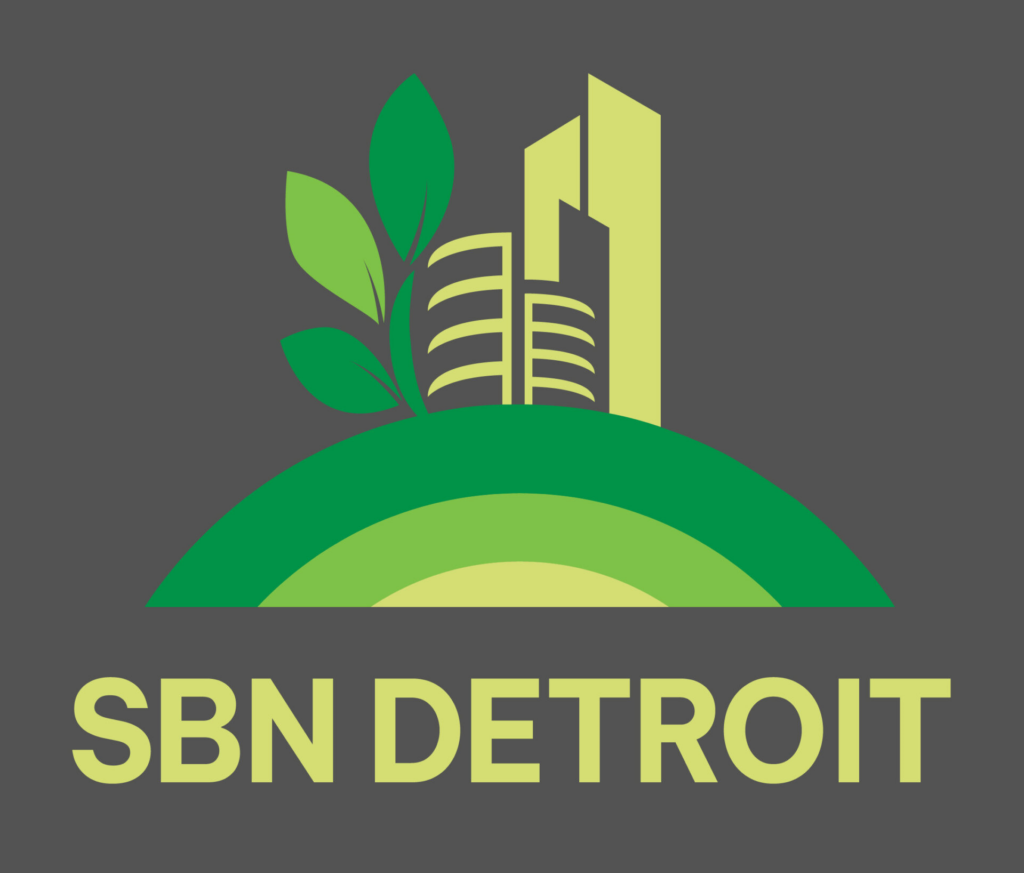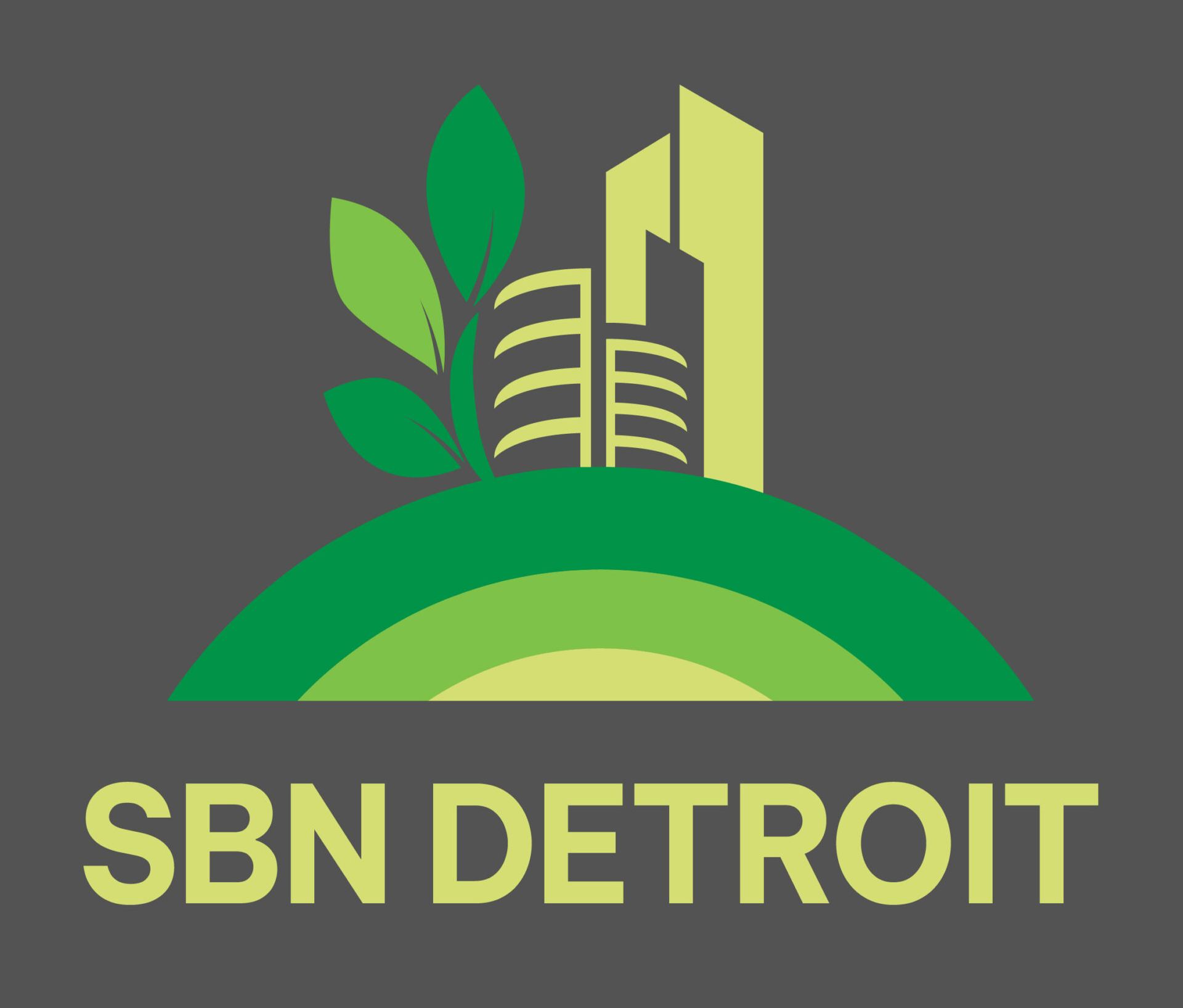Energy Savings Plus Workforce Development Aids Companies, Students
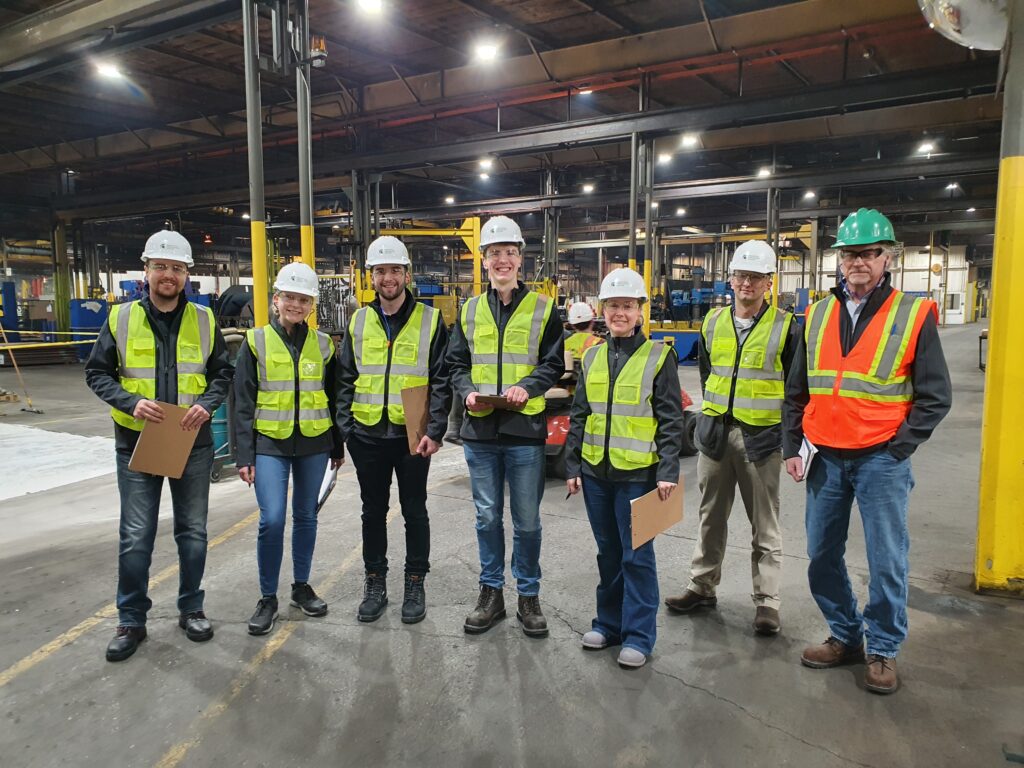
The Industrial Assessment Center (IAC) at Michigan State University, in collaboration with Michigan Technological University and Henry Ford College, offers the 6,200+ small and medium manufacturers (SMEs) in Michigan free technical assessments to help save energy, improve productivity, reduce waste, and reduce carbon emissions. As a result, the institutions are helping to build and expand a knowledgeable and diverse energy workforce pipeline. The scope of topics covered includes: – Energy and water savings – Smart manufacturing – Energy management – Cybersecurity – Resilience planning – Decarbonization – Electrification SBN Detroit spoke to Dr. Kristen Cetin, associate professor at MSU in the Department of Civil and Environmental Engineering. She also is the director of the MSU Industrial Assessment Center. Q: Tell me about the Industrial Assessment Center A: We are a U.S. Department of Energy-funded center focused on two things: First, we support small and medium-sized manufacturers and commercial building owners by providing one-day no-cost assessments to identify opportunities to improve and support their energy and sustainability goals. Our second focus is workforce development. Once students graduate they take manufacturing and sustainability and energy knowledge into the workforce. Some students will go on to jobs in manufacturing or energy, and others perhaps not, but will know to integrate what they’ve learned in whatever career they pursue. We are one of 37 IAC centers across the country, and ours is a collaboration between Michigan State University, Michigan Tech, and Henry Ford College. Q: How did the IAC come to be? A: The Department of Energy program has been in existence since the ‘70s to support energy efficiency, and every five years they do a funding call. That’s where it began. Michigan has not had an IAC for about six years. I moved here from Iowa and was surprised that this manufacturing-rich area did not have an IAC providing this service. So, when the funding call came out we applied for Topic 1, which is the manufacturing side, and Topic 2, which is the commercial building side, pilot program. We knew MSU alone couldn’t easily support all regions of Michigan given how big Michigan is. Michigan Tech is surrounded by important and different industries, so they were a natural collaboration to support the northern part of the state. Collaborating with Henry Ford College as a community college helps us to support the Detroit area, as well as to better reach more commercial buildings. This collaboration also enables broader diversity of students to participate in terms of training. So we partnered, and it’s been going very well to date. Q: What does the assessment process involve and how much support do you offer outside of the assessment? A: The assessment process begins with a thorough analysis of utility bills, followed by a one-day in-person assessment. Sometimes we leave datalogger equipment to continue to monitor the operation of energy-consuming systems after the assessment. Once the assessment and analysis are complete a full report is written up including detailed recommendations, estimates of energy efficiencies, and associated costs. We then follow up about a year after the assessment to see what was implemented, if there were efficiencies gained, and receive feedback on what was actionable and what was not. This helps us figure out what we can do better and what kind of impact each assessment has made. In terms of supporting the implementation of our recommendations, we do a few things. If appropriate we contact utility companies to see if there are rebates or incentives that fit well. We also connect interested companies to the Better Plants program, which can help facilitate larger-scope initiatives and provide ongoing support beyond our assessments. And finally, a new development that is just becoming available is a matching grant program to support any company that completes the assessment. Part of the Bipartisan Infrastructure Law implementation, this is a new grant that will match company funds to support implementation of the changes recommended in the post-assessment report. Q: Are all assessments the same or do they vary depending on the building? A: We typically have one day to do them, so to that end we follow a similar schedule and format. But our recommendations and areas of focus vary depending on what kind of manufacturing the company is doing, or what kind of commercial building it is. We do a walk-through in the morning and obtain information about all of their systems in place. At lunch, we brainstorm about areas of improvement, and then we split into groups to dive deeper into those areas throughout the afternoon. Q: How many assessments are done annually? A: We do 30 assessments per year, approximately 20 of which are manufacturers and ten commercial buildings. Q: What is the role of the students? A: This is very much a student-led program. Students are the main point of contact with each of the companies we work with, the lead in the discussions, the lead in data collection, and all aspects of the program. There is a student lead for each assessment, and that person is in charge of setting up the logistics and takes the lead during the assessment. They also present the report and recommendations to the companies we work with. They also lead the student group in creating the report draft review, which is then reviewed and approved before sharing with the company. The faculty and staff in the IAC help to support and generate ideas, provide technical expertise, as well as review recommendations and overall reports. Our student groups range from approximately three to eight per assessment. Approximately 90% of the students are undergraduates from a variety of engineering and non-engineering backgrounds. There is also a three-credit training course that students in the IAC take during their first semester in the program. All students are paid for the work they do, including training. Q: What does it mean to have this practical hands-on experience? A: I think this hands-on training is even more valuable than taking classes. It’s invaluable – this
Working at the intersection of Business, Education, and Research for a More Sustainable World
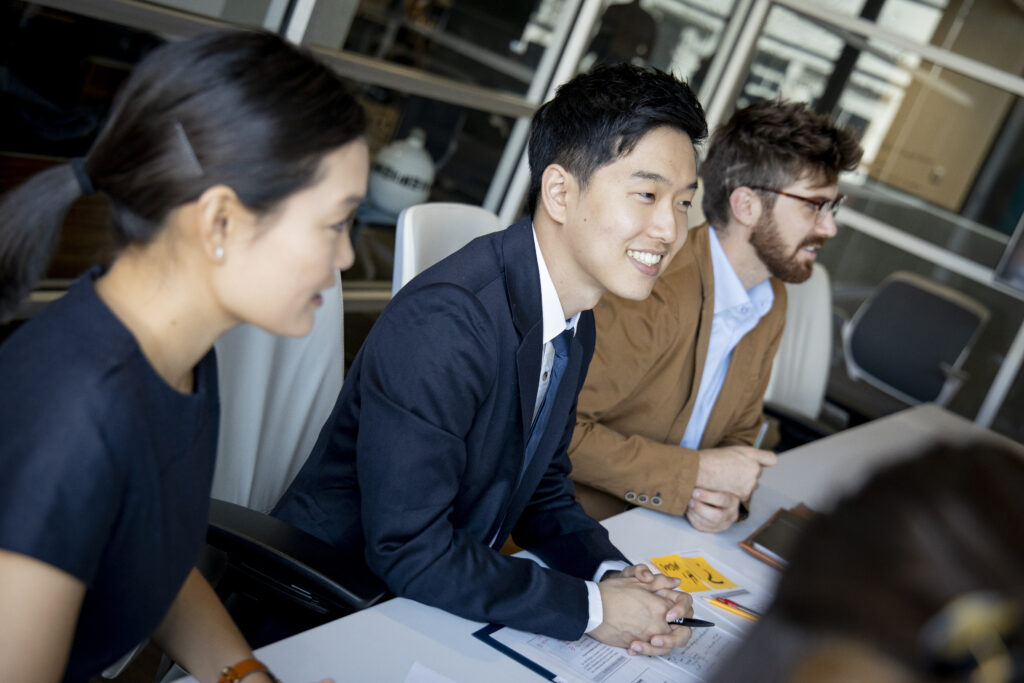
The Erb Institute at the University of Michigan has a mission to create a sustainable world through the power of business. The institute is a partnership between the Ross School of Business and the School for Environment and Sustainability, where students and business partners work together to fulfill this mission. What does this translate to, how does it work, and what impact does it have on Southeast Michigan Businesses? We talked to the Erb Institute Managing Director Terry Nelidov to find out more. Nelidov began his career as a US Peace Corps Volunteer in Paraguay in the early 1990s. Later he served as founding director of INCAE Business School’s Business Leadership for Sustainable Development Network in Latin America, as General Manager for AmeriCasas (a startup land-development company in El Salvador), and then country representative for Catholic Relief Services in Peru. He holds a BS in Industrial Engineering from Stanford University and an MBA from IESE Business School in Spain. Q: The mission of the Erb Institute is to create a sustainable world through the power of business. How do you approach this? A: Yes, this has been our mission for over 25 years and remains our mission today, although our areas of focus have expanded and evolved. When Fred and Barbara Erb endowed the institute in 1996 the focus was on two areas: teaching and research. Over the years the program has evolved to encompass applied research and impact. Meaning we now work to translate research results into practical management tools, case studies, and frameworks for business leaders to put into practice. So today, we have expanded how we think about the work we do into three main pillars; research, teaching, and business engagement. The latter challenges us to be involved in the global dialogue on sustainability and to bring back new questions to inform our research and teaching, while actively sharing the thought leadership of our faculty and students to inform that global conversation. One way we do this is by leading and taking part in global sustainability events such as the SB 2017 and 2019 conferences, the Innovation Forum UK, and more. The Erb Institute is so much more than a teaching institute – it’s about making an impact with businesses and nonprofits focused on sustainability through teaching and research and then sharing the work that comes out of that to scale up our impact in Michigan, across the United States, and beyond. Q: How are you engaging with businesses? A: Great question and my best response would be simply two examples. Recently we hosted the Michigan Business Sustainability Roundtable (MBSR) to bring together senior Michigan business leaders from Kellogg, Dow, Meijer, and others committed to working toward transformational change in social and environmental performance and asked what challenges they have in achieving their goals at the policy level, and how we could support them in advocating together for climate change and racial justice in Michigan. This was a six-month process. We are looking to deepen our connections with policymakers and advocates at the state level and use our collective voices to raise the bar on business, sustainability, and justice in Michigan. The second example involves a groundbreaking research project with Ford Motor Co. In 2018 Ford came to us with a simple but intriguing question, “How can we measure the impact of smart mobility on the human condition?” We launched a two-year research project, co-hired a postdoctoral research fellow, and created the Ford Model of Human Progress. What was particularly exciting about this initiative was that a year later, HP Enterprise attended a Sustainable Brands event where they heard about the model and then took it back to Silicon Valley and began adapting Ford’s model to HP Enterprise’s work in the tech industry. Q: What sustainability issues do you focus on beyond the environment? A: While climate change, water, biodiversity, circular economy, and plastics remain at the forefront, the scope of sustainability has expanded to include a range of social issues, even the very concept of justice and the role of business in a just society. Businesses are being called on to play a significant role here…to support social issues, such as access to education, access to health, and employee engagement and well-being. So, we’ve expanded with this evolution. Indeed, social justice is a significant focus area within our new five-year strategic plan, which focuses on preparing “architects of change” who can work at the intersection of business, sustainability, and justice. Q: How do you think the graduates of the Erb Institute impact businesses? A: We have alumni working in leadership positions in 17 countries. I can point to three examples of how they are making a significant impact. The first is Monique Oxender. While still studying at the Erb Institute, Monique took an internship at Ford and then a full-time position, helping to create their human rights function in the early 2000s. She is now chief sustainability officer at Keurig Dr Pepper, a global platform for sustainability impact. All of that began with her Erb experience. A great example of nonprofit leadership is Laura Rubin, our first Erb graduate. She worked on the Huron River Watershed Council for 25 years and is now a recognized leader in the Midwest and Great Lakes Region in water crisis and habitat issues. A third example is Rep. Joe Tate, who went into public service and politics and was recently elected as the first Black speaker of the Michigan House of Representatives. Interestingly, he was also a USMC Veteran and a former NFL offensive lineman! Q: How do you think the work you are doing at the Erb Institute impacts businesses in general? A: First, the students in class today will be in leadership roles in 10 to 15 years. Second, we make an impact through the power of our ideas and the research of our faculty. The innovations that come out of working with students, researchers, and professors are the ideas that are shaping sustainability going forward. Q: What does the
Michigan Green Communities is Moving Community Sustainability Initiatives Forward
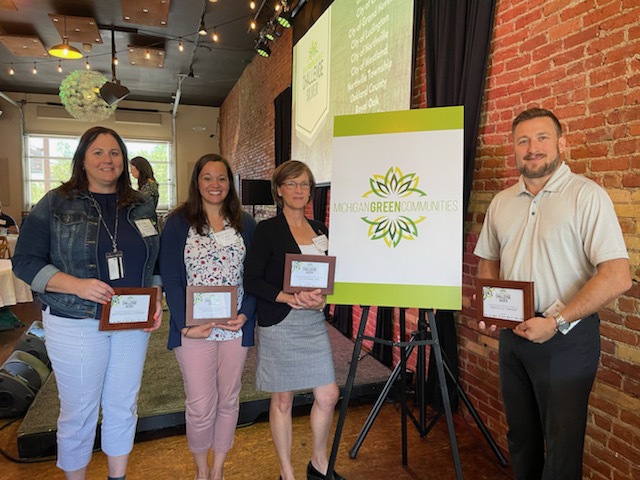
Established in 2009, Michigan Green Communities (MGC) is a statewide sustainability assistance program that works to embed sustainability into municipal and county operations. MGC is a collaboration and partnership of the Michigan Economic Development Corporation (MEDC); the Michigan Department of Environment, Great Lakes, and Energy (EGLE); the Michigan Department of Health and Human Services (MDHHS); Michigan Department of Transportation (MDOT); the Michigan Department of Natural Resources (MDNR); the Michigan Association of Counties (MAC); the Michigan Municipal League (MML); and the Michigan Townships Association (MTA). It is led by a 15-member steering committee from the partners and local governments, including West Bloomfield Township, Ann Arbor, and Canton Township. SBN Detroit spoke to Danielle Beard, Michigan Green Communities coordinator, to find out more about the work it is doing to impact sustainability initiatives in Southeast Michigan and throughout the state. Q: What is Michigan Green Communities? A: Michigan Green Communities (MGC) is a sustainability benchmarking, networking, and technical assistance program for municipalities and counties in Michigan. The goal is to embed sustainability in local government operations and promote innovative solutions at the local, regional, and state level. The main component of the program is the annual MGC Challenge (that’s the benchmarking piece) where communities track in their online accounts whether they’ve completed or are in progress on a set of action items and log metrics (click here for the full list of action items and metrics). Communities that participate in the MGC Challenge have access to free support and technical assistance programs through the MGC program and EGLE’s Catalyst Communities program. Q: What is the impetus behind MGC? A: There are a lot of benefits to embedding sustainability into municipal and county operations. Cost savings is a big driver for communities as they can slash their energy and water bills, helping them control the cost of their operations. Additionally, Michigan’s weather patterns are changing drastically, and local units of government play a large role in adapting our society to these changes. Local policies and decisions can help to mitigate the effects of heat waves, severe snowstorms, massive rain events, and more. Multiple state agencies interact with communities on different areas of sustainability. The MGC program was designed to bring those agencies together to collaborate on how to best meet the needs of local governments. And because local governments are also on the steering committee, they’re providing feedback to state agencies on the challenges they face to inform the agencies’ work. Q: What areas of sustainability are you focused on? A: The Michigan Green Communities program focuses on embedding sustainability into local government policies, programs, and operations. The MGC Challenge action item categories outline this best: Planning for Inclusive and Lasting Impacts Climate Resilience and Adaptation Energy Efficiency & Renewable Energy Responsibly Managing Materials Sustainable Land Use & Economic Development Improving Health Outcomes Protecting & Conserving Water Resources Support Clean & Inclusive Mobility Inspire & Mobilize Residents Q: What examples can you give of the work that’s been done? A: Since it was started in 2009, over 100 communities have participated in various ways and taken steps to advance sustainability in their communities. In our 2021 challenge: 45 communities participated representing 3.6 million Michiganders. MGC awarded 12 bronze certifications, 10 silver certifications, and 23 gold certifications. Over 1,500 sustainability actions were logged as complete, and over 1,000 were logged as in progress. The MGC Challenge added a set of metrics to track data like GHG (greenhouse gas) emissions, community water use, and more. We launched the MGC Accelerator Cohort to advance sustainability practices in bronze & silver MGC Challenge communities. The current challenge is now live, and communities can report on their sustainability actions through the 2023 calendar year. Q: What does the future look like for MGC? A: In short, the future of MGC will involve bringing more technical assistance, resources, and templates to communities to help them expedite resiliency strategies and decarbonize their operations. This will also involve more networking among communities so they can learn from one another and not reinvent the wheel. We launched the MGC Accelerator Cohort in January 2023, which is a group of bronze and silver-certified MGC Challenge communities that come together as a group to address sustainability issues. The first topic that we’re focusing on is green infrastructure. Many communities in Michigan have been dealing with flooding and water runoff causing pollution, fluctuating shoreline water levels, and severe weather events. Green infrastructure solutions can help to address these issues in a way that protects man-made infrastructure and natural features. The group will meet monthly with subject matter experts and consultants that MGC has hired to share ideas, draft ordinance language, and identify potential implementation opportunities and funding for green infrastructure projects. After the green infrastructure module, the cohort will select another topic to work on in a similar style. The cohort is open to any community that has taken the previous Michigan Green Communities Challenge or plans to participate in the current Michigan Green Communities Challenge. This work is being funded by the MEDC. Be sure to subscribe to our newsletter for regular updates on sustainable business practices in and around Detroit.
With 110,000 Jobs and $5 Billion in Wages, Michigan’s Outdoor Rec Industry Continues to Grow
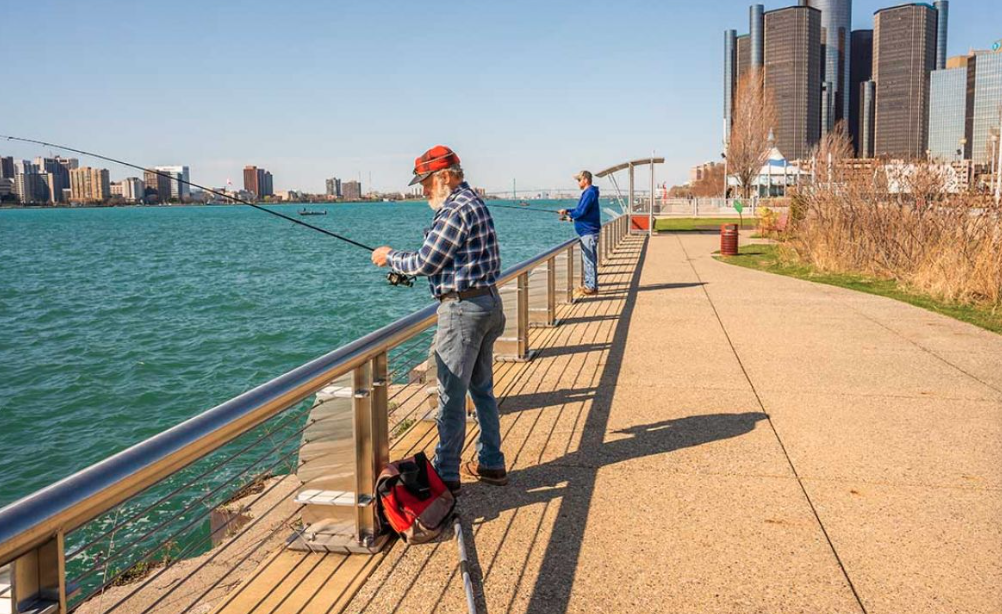
With 36,000 miles of rivers and streams, 20.3 million acres of forests, 1,300 miles of designated mountain bike and bicycle trails, 6,500 miles of snowmobile trails, and more than 600 campgrounds, Michigan has a lot to offer in the way of outdoor recreation. These resources provide connections with nature and opportunities for a healthier lifestyle, and they support Michigan’s economic growth with more than 7,000 outdoor recreation industry companies that include manufacturers and retail and service-sector businesses. And the goal is to continue growing. “When you put Michigan’s outdoor rec growth stats next to the fact that Southeast Michigan is one of the best places for entrepreneurship and venture capital, it becomes about how do we exemplify this and amplify it and bring and support talent here toward even more growth,” said Brad Garmon, director of the Michigan Office of Outdoor Recreation Industry of the Michigan Economic Development Corp. Gov. Gretchen Whitmer created the office in 2019 to focus on the outdoor economy, and the same year, the state joined the Confluence of States (COS), a bipartisan coalition of states dedicated to cultivating strong outdoor recreational economies while preserving land and other natural resources. Garmon, the coalition’s incoming chair for 2023, said the coalition’s four areas of focus align with Michigan’s goals of developing a sustainable future: Economic development, workforce and education, public health and wellness, and conservation and stewardship. “There is inherent connectivity between the outdoor recreation industry and building a sustainable future – a sustainable Michigan,” Garmon said. “We are leaning into the four COS areas of focus to create jobs, strengthen the economy, and promote physical activity while also being stewards of our wetlands, waters, forests, trails, parks, and natural resources.” The added infrastructure points to the growth in the outdoor recreation economy. According to the Michigan Economic Development Corp. and the U.S. Bureau of Economic Analysis: Michigan’s outdoor recreation economy grew 15.4% from 2020 to 2021 and is up 30 percent since 2012. The outdoor recreation industry employs nearly 110,000 people in a wide range of occupations and skills, including design and manufacturing, retail sales, and hospitality, accounting for $5 billion in wages and salaries. More than 7,200 of Michigan’s outdoor recreation jobs are in manufacturing, such as boating, RV, and gear manufacturing. The outdoor recreation economy also impacts local retailers across the state to the tune of $3.5 billion, accounting for 32% of the total value-add impact. Retail jobs supporting outdoor recreation totaled over 41,000 in 2021. The value-add is the difference between sales receipts plus other operating income and inventory change and production costs. And more growth is the plan. “We are working on identifying how we can add jobs, and also bring companies in from out of state,” Garmon said. He points to the bike industry as an example, saying, “I attended a bike industry summit recently and a large area of discussion focused on the fact that manufacturing is mostly overseas, and that the legacy of bicycle production in the U.S. has been lost. By pointing them to the manufacturing and engineering expertise in Michigan this creates a pathway for opportunity and a win/win for all.” Another area of interest for Michigan is the electrification of motor sports vehicles. “This industry is looking at and thinking about an electric future now, and our innovation in this area could bring big opportunities and more business,” Garmon said. Given that Michigan is also being recognized as a destination for startups and venture capital investment, the implication of opportunity gets even stronger. In fact, Detroit is the No. 1 emerging startup ecosystem globally, according to newly released rankings from Startup Genome’s 2022 Global Startup Ecosystem Report (GSER). When you consider that Detroit has also been recognized as one of the best travel destinations in the world, one of Time’s ‘Worlds’ Greatest Places’, and the Riverwalk is consistently voted best in the America, Detroit becomes even more interesting. Garmon shares, There is this antiquated idea that recreation only happens in wild or natural places, but Detroit is demonstrating that recreation happens everywhere. The Dequindre Cut, Belle Isle, the Riverwalk, and our parks all support quality of life and activity and recreation in Detroit. He added: “You don’t have to be on a trail or working in the wilderness to apply work skills and/or enjoy life. We are getting better at telling Detroit’s story and talking about Michigan’s assets and not living in the shadows of places like Colorado – we are now standing right next to them.” Be sure to subscribe to our newsletter for regular updates on sustainable business practices in and around Detroit.
Reconnecting Communities and Bringing Sustainable Infrastructure Opportunities to the Future
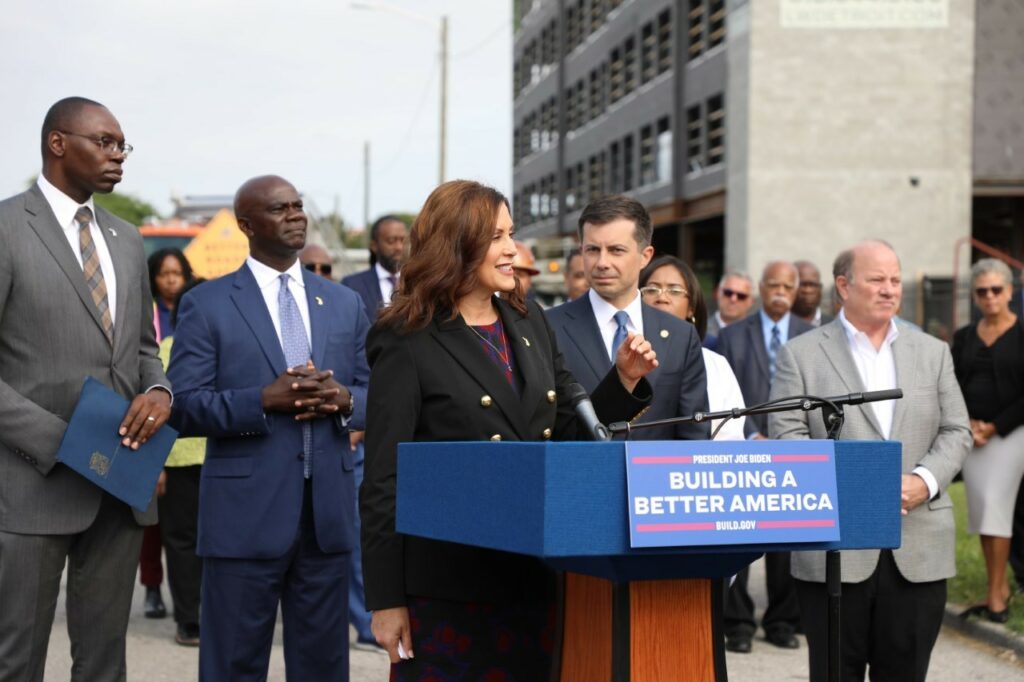
The conversion of I-375 into an urban boulevard is a profoundly meaningful project that will replace the divide that leveled the Black Bottom neighborhood and Paradise Valley entertainment district more than 60 years ago. Now, the Michigan Department of Transportation (MDOT) is funneling $104,657,051 from the President’s Bipartisan Infrastructure Law that passed last year to replace the one-mile-long freeway and develop a lower-speed urban boulevard with the impetus to recognize the wrongdoing of the past and get it right for the future. In this – the second of our two-part series, Jonathan Loree, MDOT senior project manager, talks about the importance of the project in terms of social and environmental justice, as well as development and infrastructure. Loree has worked for MDOT for 18 years and has been involved in the design, construction, and planning of major projects, including work as MDOT’s lead on the M-1 Rail streetcar on Woodward Avenue. He has been project manager for the I-375 Improvement Project since 2017. Q: From your perspective, what will this new boulevard bring to the area? A: I think it’s about connection. Reconnecting communities and creating new opportunities for those communities. I- 375 was built during the freeway boom and in the name of ‘urban renewal,’ and it’s just not the right infrastructure for the last mile into downtown, so it was time to look at how we can make this area more efficient and move toward a more sustainable and connected future. This is the heart of the city, and the boulevard will serve pedestrians and cyclists well, and move people around better – in ways that the freeway clearly cannot accomplish. The way downtown connects to neighborhoods – both east and west, as well as north and south – will be drastically improved, and some elements of the former street grid will be redesigned back into the road network, where possible. Ultimately it will be a much more useful corridor in terms of moving people around, offering walkable options, and opening real estate for potential development. This will also eliminate some of the vehicle usage in that area and effectively replace a large concrete infrastructure with a more environmentally and community-friendly passageway. Q: What about the sustainability aspects? A: This project gives us roughly 31 acres of property beyond the roadway since we will be reducing the pavement footprint. Developing this land toward furthering the community, the economy, and social equity is absolutely the goal. And to achieve this, stakeholders, the city, and the residents are working together. There will be pockets of spaces and medians, etc., that will give us opportunities to improve the aesthetics and environment – whether that be plants and vegetation and grass or artwork or items that commemorate the past. And from a sustainability standpoint, we’ll be eliminating the bridges and reducing the amount of pavement and replacing that with a boulevard that better serves the area now and into the future. We also are implementing a new stormwater management system. Q: How will the new system help ameliorate stormwater issues? A: Clearly the recessed freeways and current stormwater systems are not built to handle the multiple 100-year storms that we are seeing. There is just no place for that much water to go within the current system. This project gives us the chance to build new infrastructure to handle it much better for the area in the future. We’ll be constructing gravity-fed pipes that will allow us to treat and release the water directly to the Detroit River. This will take the load off of the current system, which consists of two aging pump stations and outlets into the Detroit Water and Sewerage Department system. Less flow in the combined sewer system will help mitigate the overflow and flooding on the freeway and in nearby homes. Q: What are the economic factors? A: This is a very valuable piece of property close to downtown, and it’s a high-traffic area with a lot of potential for development and new businesses. We’ll also be putting people to work and looking for minority contractors to work on the project. The connectivity between neighborhoods means more people on foot and on bicycles to walk into stores and restaurants and bars and improve business in those areas. Q: Speaking of putting people to work, this project will involve workforce development, correct? A: Yes. We want this property to provide long-term benefits and we are looking at leveraging the project and the outcomes toward that. This includes workforce development, providing more opportunities to disadvantaged businesses, entrepreneurs and small business enterprises and more. Construction begins in 2025 and we are currently looking at how best to engage and get people involved in trades and training people to participate. Q: Is this a unique project for MDOT? A: Absolutely. We are embarking on a design and construction project to acknowledge mistakes made in the past and create better infrastructure for the future. Not only for the corridor but for the city and state and for the people. Honoring the past and building an environment that facilitates live, work, and play for now and into the future is important and necessary. Q: What about planning for future connectivity and technology? A: There is a lot of talk about autonomous vehicles and interest in how transit will play into this and what that looks like for the future. We will develop this infrastructure to support and facilitate flexibility for the future to the best of our ability and knowledge now. Be sure to subscribe to our newsletter for regular updates on sustainable business practices in and around Detroit.
A New Boulevard for Social Justice, Connectivity, and Economic Impact
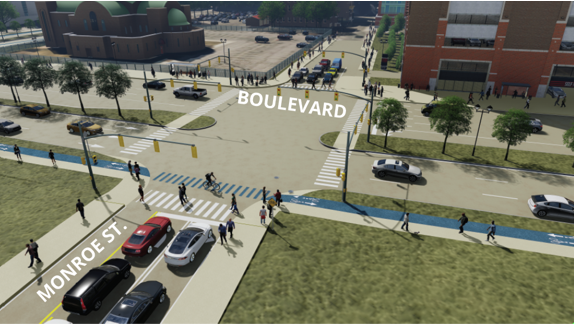
The development of I-375, the extension of I-75 that runs into downtown Detroit, leveled the Black Bottom residential neighborhood and the Paradise Valley entertainment district when it was constructed in the late 1950s and early 1960s with economic impact displacing 130,000 people, hundreds of small businesses, churches, and more. The city has been divided by the highway for over 70 years. Now, the Michigan Department of Transportation (MDOT) is funneling $104,657,051 from the President’s Bipartisan Infrastructure Law that passed last year to replace the one-mile-long freeway and develop a lower-speed urban boulevard with the impetus to recognize the wrongdoing of the past and get it right for the future. The project proposes three elements of study, design, and research. The first is understanding the urban design profile … how this area is developed to reconnect Downtown Detroit and the riverfront to the surrounding neighborhoods. Second is the final boulevard design, which is intended to enhance the urban experience based on City of Detroit design standards and offer new economic opportunities via business development. Finally, the framework will determine how diversity, equity, and inclusion can be used to create opportunities for Detroiters, taking the history of the land into consideration. This is the first of a two-part article that will cover the project’s social justice, connectivity, and economic impacts. In this article, MDOT Director Paul C. Ajegba talked to SBN Detroit about this ‘very unique and challenging project.’ With more than 31 years of experience at MDOT, Ajegba established the position of chief culture, equity, and inclusion officer at the deputy director level within his leadership team. This followed his work to establish MDOT’s Historically Black Colleges and Universities (HBCU) Transportation Diversity Recruitment Program (TDRP). The program is a partnership between MDOT, the Federal Highway Administration (FHWA), the American Council of Engineering Companies of Michigan (ACEC), and Michigan colleges and universities, offering on-the-job training to minority undergraduate students pursuing degrees in engineering. Ajegba is a member of the Conference of Minority Transportation Officials (COMTO) and serves on the following boards: the American Association of State Highway and Transportation Officials (AASHTO) (vice president), chair of the AASHTO Council on Public Transportation, ITS America, Mcity, the University of Michigan Civil and Environmental Engineering Friends Association (board president), the Engineering Society of Detroit, and the . Q: What is the impetus behind the I-375 project? A: It is a way for us to recognize that things were not done right in the past, and it is our opportunity to get them right. In the early ‘50s, Black Bottom was a large community with many thriving African American residents and businesses. In those days we did not have the community engagement that we do now. City planners decided that the best use of the area was to build a freeway and they did it, causing the displacement of thousands of residents and many successful businesses. So, the impetus behind this project is to take a step back and rethink the way we plan and design, build our infrastructure and then build it with the users, stakeholders, businesses, and residents in mind. It is the opportunity to conduct a 360-degree review of all areas of impact and make decisions that are right for everyone. The equity and inclusion piece of this is huge. We are being meticulous and methodical in how we plan to make sure the community is engaged every step of the way. Q: What is the narrative around the topic of equity? A: We need to bring equity into our transportation infrastructure. We cannot erase the mistakes of the past, but what we can do is make sure we look through and operate through a lens of equity going forward. Several different uses of this area have been on the table. We engaged with the community and together decided that creating a boulevard that will attract new development and connect neighborhoods is the best use of the corridor. Q: How will this project honor the history of Black Bottom and Paradise Valley? A: We are currently in the design process and considering all different ways to do this and we are hiring a historian to help with this aspect. Recognizing and honoring what took place here will be built into the aesthetics of the whole corridor. You will see this reflected in the project overall. Q: Is this project part of a larger shift toward building state infrastructure with equity in mind? A: I think there is a big shift taking place not only in Michigan but across the country to rethink inclusivity when it comes to building infrastructure. There is a substantial focus on developing walkable communities, making sidewalks wider, incorporating bike lanes, and connecting neighborhoods with greenways. The walkable aspect gives local businesses in the area more foot traffic and access opportunity. I believe this is an equity issue, an economic issue and also a health issue. Making areas accessible for walks and bike rides and connectivity and movement is important. Q: How did this project originate? A: Discussions began eight years ago. The bridges and roadways have required repair and are at the end of their useful service life. So instead of simply repairing them, we began to look at rethinking the freeway and asking ourselves – Is this the right thing for the city? Extensive research was conducted with a Planning and Environmental Linkage (PEL) study to identify and evaluate alternatives for the corridor that would meet the transportation needs of all users and improve connectivity. This led to the determination that the transformation from a freeway to a boulevard was feasible. This then led to an Environmental Assessment (EA) study to document the human and natural impacts associated with any proposed improvements. What we landed on is a street-level boulevard that will begin south of the I-75 interchange and continue to the Detroit River (Atwater Street), effectively using the city grid to disperse and collect traffic, opening additional connections to the riverfront, Eastern Market, and Brush Park, and creating
Through Staffing, Cleaning, and Advocating for the Community, Business Owner is Working to Motivate Detroiters Toward Sustainable Growth
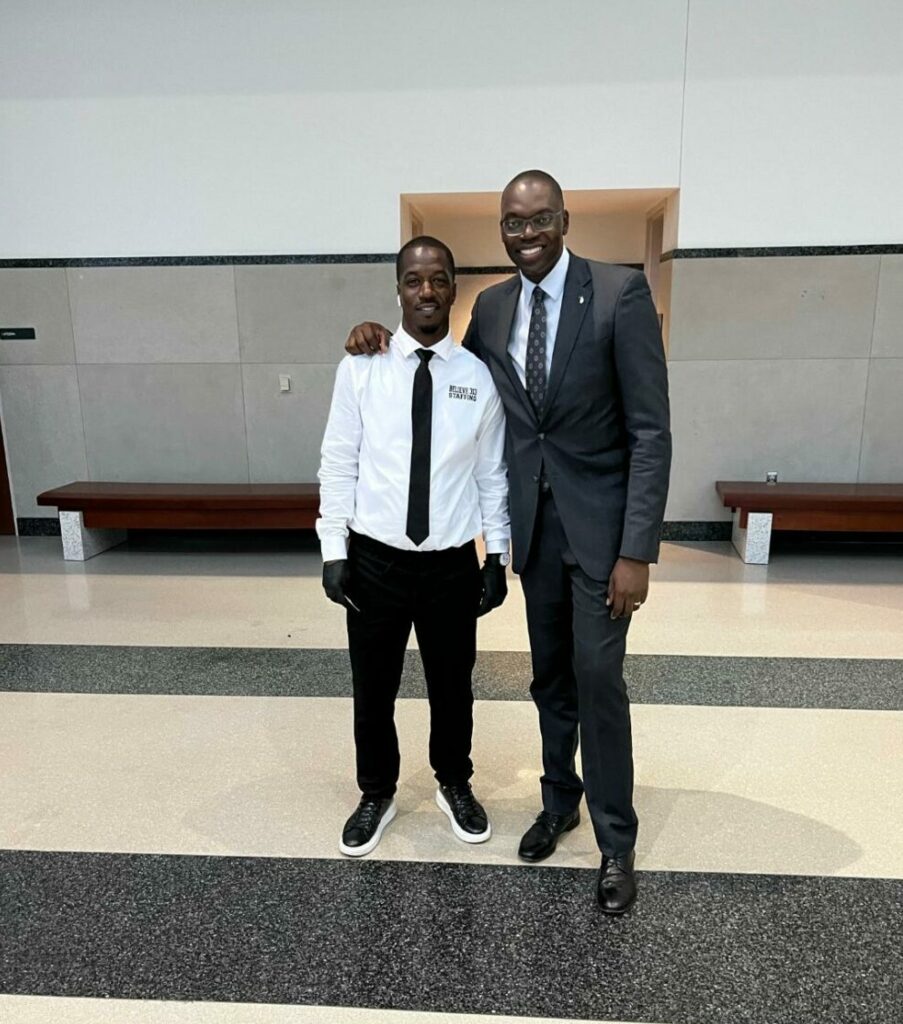
From social justice to getting Detroiters back to work, and even an emerging green dumpster business, Mario Kelly is following his passion for connecting those in the community to sustainable opportunities and inspiring others to follow their business dreams. To that end, Kelly started B3L1EV3 – a motivational-apparel company – several years ago to inspire Detroiters to go after what they believe in. Keeping that sentiment, he then launched Believe 313 Staffing, Believe 313 Cleaning, and soon-to-be Believe 313 Dumpsters. Born and raised in Detroit housing projects, he has been a community activist and liaison for years. Kelly started Believe 313 Staffing in 2017, following that with the launch of Believe 313 Cleaning in 2020, and now holds contracts to do post-event cleaning for Ford Field, Little Caesars Arena, Comerica Park, the Fox Theatre, and Pine Knob Music Theatre. His extended vision for Believe 313 Dumpsters is about diverting commercial and residential waste from landfills in the city of Detroit and beyond. Here he talks to SBND about his businesses, his inspiration, and his continued efforts across areas of sustainability in Detroit. Q: How did Believe 313 Staffing start? A: I grew up in a HUD neighborhood at I-75 and Canfield and nearby was the meat packing company Wolverine Packing. They had received a tax abatement from the city of Detroit to build a storage unit and a park in the neighborhood. Part of that tax abatement required them to hire 50 people from the surrounding area. Owners Jim and Jay Bonahoom came to the community to get insights on what people wanted and to start to talk about hiring. People in the neighborhood referred them to me because I was heavily involved in the community and knew a lot of people. They told me they need 50 people and I brought them 100 applicants. Jay and Jim then began urging me to start a staffing company to help connect people in the neighborhood to opportunities. I thought – what does a kid from the projects without a degree know about starting a business? But they kept advocating for me and supporting me, so I did it, and today it’s a seven-figure business. Q: You’ve been very involved in social justice and community. You started a program called Canfield 75, an effort that aimed to bridge the divide between housing projects in your community. You created a neighborhood Meet Up and Eat Up – a free summer lunch program for students – and you’ve coached and led youth groups in several capacities. Where does your passion come from? A: I’ve always felt that my purpose is helping people. And growing up where I did … you form strong bonds. We had to help each other in whatever we had going on. There is a real sense of community in underprivileged areas. I want to and can get people in the community to work. They are ready and willing to work, and I enjoy connecting people to local businesses and creating opportunities for people to get ahead. My purpose here is to help assist people on their journey to financial stability. It’s a win/win. Q: You grew your staffing company and added a cleaning company – Is that right? A: Yes. I had the concept and business cards – the start of the cleaning company. I was involved with the Detroit Youth Choir and they were invited to take a tour of Shinola that I attended. That was serendipitous because the individuals at Shinola happened to mention that they needed a new cleaning company. I wrote up a proposal and have been cleaning for them since. Eventually, I was referred to Comerica Park, and that opened the door to all of the arenas. I just held a two-day job fair to hire people to clean Ford Field on Thanksgiving. The pay is $22 per hour which is solid. I had 120 people come out for this opportunity. This helped folks earn money to buy Christmas gifts and fulfill other basic needs. Q: What sustainability practices do you follow regarding your work at the arenas? A: We use all eco-friendly cleaning products. All of the arenas have robust recycling practices, and we sort all plastics, cardboard, cans, and bottles for the arena’s recycling companies to then handle. I’m working to convert everything we do as a company to environmentally friendly – such as cleaning products – and a focus on waste diversion. That is the impetus behind the new dumpster company – Believe 313 Dumpsters. Q: Tell us about Believe 313 Dumpsters. A: Living and working in the city, and through the cleaning business, I’ve realized that between residents and businesses we have a lot of dumpster usage in the city. And most of the contents of those dumpsters is ending up in landfills. The goal behind Believe 313 Dumpsters is to recycle and divert as much of the contents of the dumpsters as possible. Q: What does the future look like for the Believe 313 companies? A: Motivating Detroiters in a way that moves people and the city forward in a sustainable way. Whether that’s from a financial and economic standpoint, a social justice standpoint, or an environmental standpoint, for me it’s about creating opportunities for people to thrive. Be sure to subscribe to our newsletter for regular updates on sustainable business practices in and around Detroit.
MSU – Driving Future Sustainability Leaders into the Workforce and the World
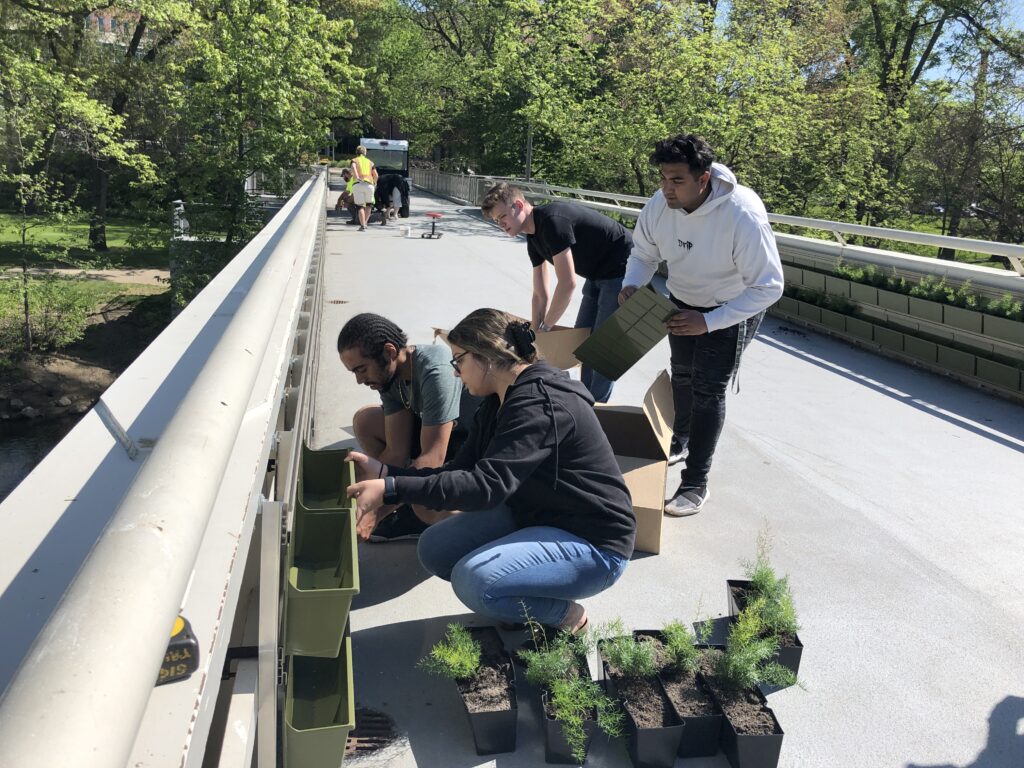
With the tagline ‘A Better Tomorrow is Up to Us,’ Michigan State University is working to minimize its footprint while driving new generations of leaders and influencers in sustainability. As a pioneer land-grant university and Michigan’s first agricultural college, MSU works to be a change agent for communities to accelerate cross-sector climate response; serve as an important knowledge generator and convener; educate the next generation of leaders that are most likely to be disproportionately impacted by the effects of climate change; and influence the lives of students, alumni, and stakeholders for many generations. Sustainability Program Coordinator Laura Young shares with SBN Detroit how the work that’s being done in East Lansing is designed to impact the campus, Southeast Michigan communities, and businesses now and forward. Q: When did sustainability practices at MSU begin? A: MSU’s history is rooted in sustainability as an agricultural school, and It’s been going strong for decades. But one thing I can point to as an example is our work and efforts around reuse recycling. In 1988, students petitioned the board of trustees to bring recycling on campus and two years later it was established. (Recycling) has grown tremendously and in 2010 we opened a LEED Gold Certified Surplus Store and Recycling Center. Today, the operation has greatly expanded. We’ve added a robotic sorter to our material recovery facility to enhance safety and efficiency. We’re able to divert more organic materials from the landfill thanks to expanded food waste programs and a vermicomposting facility at the center. Through all of these efforts, we’ve decreased the amount of trash per student by 66% since 1990. Our progress as a sustainable institution is a continual evolution. When we commit to something there is never an endpoint, we are always driving to do better and improve. Q: Your website states the following: Having the foundational understanding of nature’s complex relationships as a premier land grant institution, MSU is well-positioned to influence the lives of students, alumni, and stakeholders for many generations. Can you tell us more about that? A: When we think about our role as educators and knowledge generators, we are well-positioned to act as agents of change. We are educating our leaders of tomorrow. And we’d be doing a disservice if we didn’t teach them about climate change and sustainability. They need to deeply understand the impact these global challenges have and will have on the world and leave campus ready to do great work around this. We know businesses are going to need graduates who are ready to hit the ground running toward their sustainability goals, and we are prepping them. Q: What are your short-term sustainability goals? A: We are going through a transitional period in the Office of Sustainability. We lost a great leader, Amy Butler, who passed away earlier this year. We are in the process of hiring a new director of sustainability and will continue to build upon many great sustainability accomplishments. Like many businesses, MSU has experienced many hardships because of the pandemic. This is our first year with fully in-person operations. We are doing a lot of rebuilding and piloting new initiatives. MSU is strengthening our Student Organic Farm and bringing back our Green Office program and Eco Rep Program among many others. Q: What is the Eco Rep Program? A: This is a program that is run by Student Life and Engagement. (SLE) Students are responsible for helping to educate other students to become strong environmental stewards. These kids are passionate and have tremendous energy and we know that students are better messengers to communicate with other students. So, this is a peer program – a role model program – ensuring that we launch environmental stewards out into communities and businesses and the world when they graduate. Q: MSU’s sustainability focuses are campus, curriculum, community, and culture. How does that framework help MSU meet its sustainability goals? A: This is our 4-C Framework and it speaks to the holistic and comprehensive perspective that we apply to sustainability. First, “campus” encompasses our sustainable operations such as our nationally recognized solar carports that deliver 10.5 megawatts of peak power. But we also have incredibly impactful initiatives that aren’t as well known. One example is SLE’s Pack Up. Pitch In, a program that supports diverting waste during move-in and move-out on campus, which is in its 25th year. 17,000 students moving in each year can generate a lot of waste. This year we celebrated 25 years of the program and collected over 12,000 pounds of food at move out that we donated to local charities. During fall move-in we diverted over 60% of materials from landfills, including 1,200 pounds of polystyrene and 68,000 pounds of cardboard. Curriculum deals with how we are educating our students about sustainability and the innovative research happening at MSU around global challenges. We have over 800 courses and 20 undergraduate degrees that address sustainability. We have immersive living-learning programs like RISE that let students explore sustainability issues in applied contexts. Campus and Curriculum intersect – our campus is a living lab that gives students real-world experience in solving sustainability problems. They work alongside staff and faculty and use our infrastructure as a testbed for sustainable solutions. An example of this is our Green Walls. The club Sustainable Spartans wanted to create an indoor green wall in 2020, but then the pandemic hit, and they had to pivot. The project gave students problem-solving experience, experience working with multiple campus partners and vendors, experience managing a project, experience with budgets and fundraising, and more. Ultimately the project culminated in a beautiful legacy that they have left behind for students, employees, alumni and visitors to enjoy. In terms of Community, as an institution, we play a large role in engaging and working with community partners to advance sustainability. For example, MSU has played a large role in extending the regional trail system in Mid-Michigan including expansions of the Lansing River Trail and much more. And the fourth C
Rockford Construction – Focusing on the Full Life Cycle of Spaces
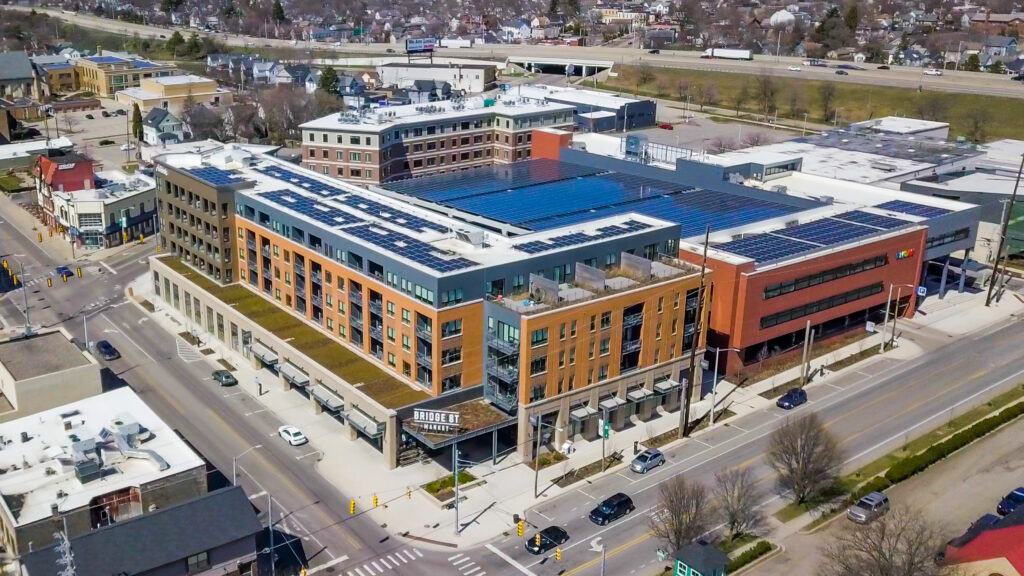
From real estate development to construction and property management, Rockford Construction has been serving the commercial, multiunit, educational, industrial, healthcare, and retail markets throughout the Midwest for more than 30 years. How do they approach sustainability? Mike VanGessel, founder and CEO of Rockford Construction, shares that and more with SBN Detroit. Q: Please tell us about the sustainability practice you have in place. A: Rockford’s current sustainability efforts reflect a “triple bottom line” that is focused on people, the planet, and profit. We consider ourselves to be good stewards of all three of these finite resources. This is certainly a broader view than many people take, but one that is important to our clients and our communities. And we’re not just a construction company. We also develop, own, and manage properties, so our focus extends across the full life cycle of space – not just the initial resources during construction, but the total cost of ownership and the impact our buildings make into the future. As a result, our efforts are quite broad. But each building type brings its own set of challenges and opportunities, allowing us to customize our approach and maximize value to our clients. Q: When did your focus on sustainability come about? A: Decades ago. Rockford was an early adopter of sustainable construction practices. We knew that buildings were a major driver of energy consumption at that time. As a company committed to delivering value to our clients, we recognized that achieving greater energy efficiency would also decrease long-term costs. As the sustainability movement evolved and our knowledge of healthy buildings has grown, our efforts have expanded to include things like water conservation, low VOC (volatile organic compounds)-emitting materials, locally sourced and rapidly renewable materials, and more. Our more-recent triple bottom line approach recognizes that “people” and “profit” are also finite resources, as we’ve seen in our current economy. The shortage of workers – not just in construction but in most industries – has driven a focus on a construction process and end-user facilities that are highly efficient, productive, and attractive to people. The reduction of waste in time and money allows those resources to be deployed elsewhere. Q: What are some examples? A: Over the years, Rockford has completed hundreds of projects that are LEED certified or designed to meet certification requirements. But our approach is applied to all our projects, exploring the building design, systems, and materials to determine the right solution based on client needs, first costs, and long-term operational expenses. The most successful projects result from early involvement and clear goal-setting. One of the best examples can be found in Circuit West, a cutting-edge energy district that encompasses a 13-block area in Grand Rapids. As Rockford was developing and constructing buildings in the area, we partnered with Consumers Energy in their effort to pilot next-generation energy technology. Together, we installed 1,800 solar panels and battery storage capable of producing 500 kilowatts every hour. Power lines were buried, and solar arrays were installed in conjunction with other construction work, greatly reducing installation costs. The result is more reliable, renewable energy for the neighborhood. While Circuit West was a large-scale effort, early involvement allows us to explore all possibilities, uncovering those that make the greatest impact on our clients’ triple bottom Line. Q: What are the drivers behind these practices? A: The driver of sustainability is simple. We are creating healthier, more energy-efficient, and cost-effective buildings for our clients and the people who will live, work, play, and heal inside of them. In the early days, sustainable design and materials were thought to drive additional costs to buildings, and owners had to be deeply committed. Today, a better understanding of good design, appropriate systems, and more readily available sustainable and renewable materials are all driving cost savings. Why a client chooses sustainable solutions – cost savings, environmental responsibility, or healthy spaces – isn’t important. What matters is that the result helps us conserve resources and positively impact our world. Q: Rockford services so many different industries and types of construction – how do your sustainability practices differ between projects? A: Each project is unique, and clients have different goals and expectations. That said, best practices can vary based on different project types. For example, some industrial buildings are high users of energy and, at times, water. Energy-efficient systems, water conservation, and grey water options can provide good solutions. In healthcare facilities, research shows that healing environments include natural light, views, good ventilation, low VOC products, and easily cleaned materials. By focusing on what makes each building unique, the low-hanging fruit of sustainability becomes clear. Often, the most sustainable building is the one that is renovated, either for its existing use or for a new one. This is particularly true in an urban setting, where many building exteriors were built to last for decades. By reusing the walls and structure, not only are tons of waste materials diverted from landfills, but owners can capture the value of materials already in place. Warehouses can be converted into apartment buildings, churches become office buildings and schools are reimagined into senior living. Over the years, Rockford has developed expertise in the adaptive reuse of space. Q: Do you have a team of people set up to implement your sustainability practices? A: In the past, the Rockford team included a director of sustainability. However, we wanted to turn what could be described as a “program” into a “practice.” Our construction team and our property and facility managers are all well-versed in sustainable practices. But we have a variety of team members, from accountants to graphic designers, who want to be a part of our company-wide efforts. That’s why we are launching a company-wide Sustainability Committee to continue to expand our impact both internally and externally. Q: Beyond vendors and material choices – what else do you look at? A: Locally sourced talent, vendors, and materials are part of a strategy that is appealing to our clients, who strive to support
A Focus on Decreasing Food Waste in Detroit
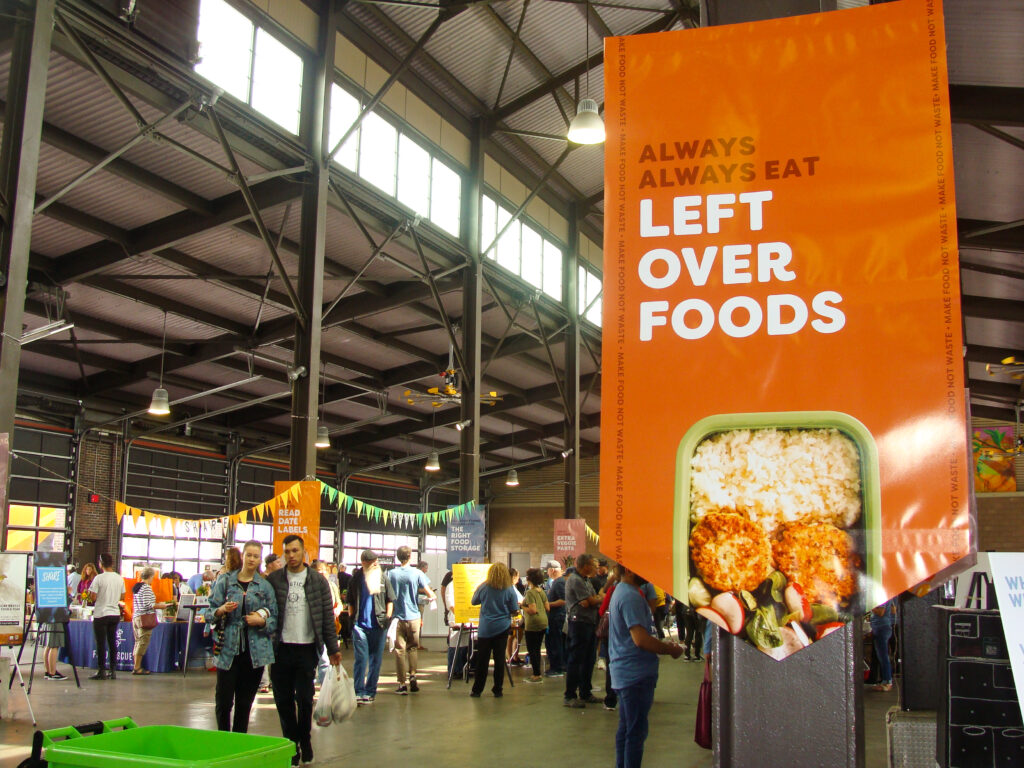
Motown Museum Chairwoman and CEO Robin Terry Speaks on the Design, Vision, and programming and how it will impact the city of Detroit.
